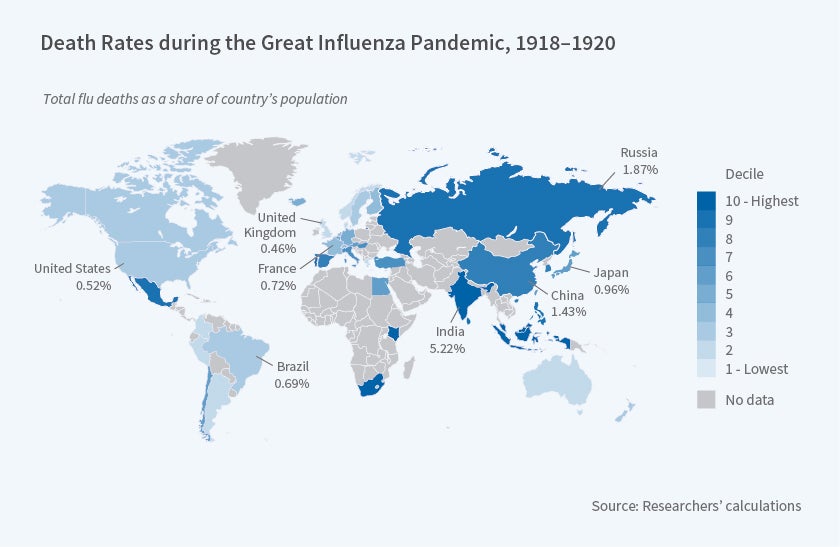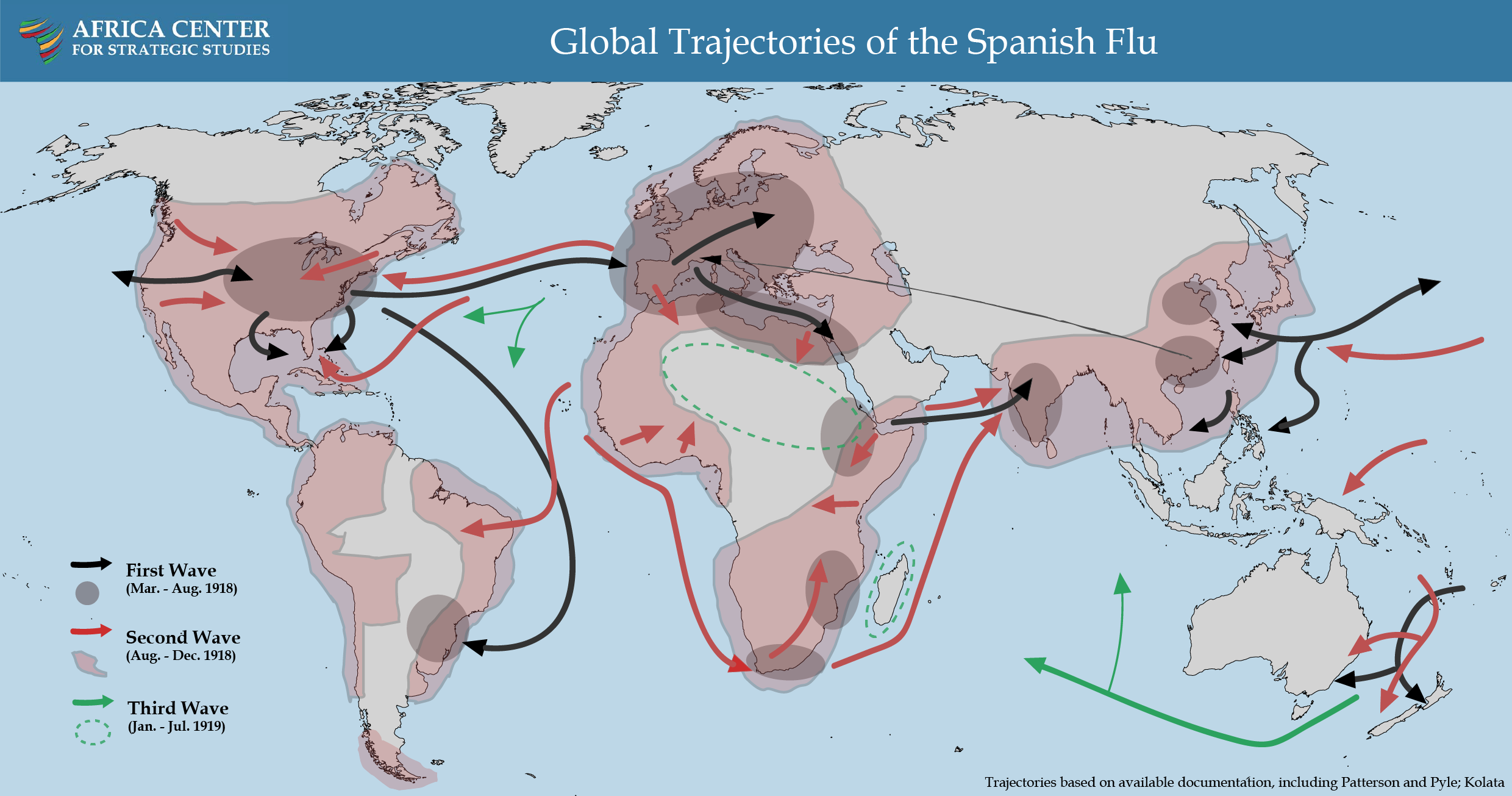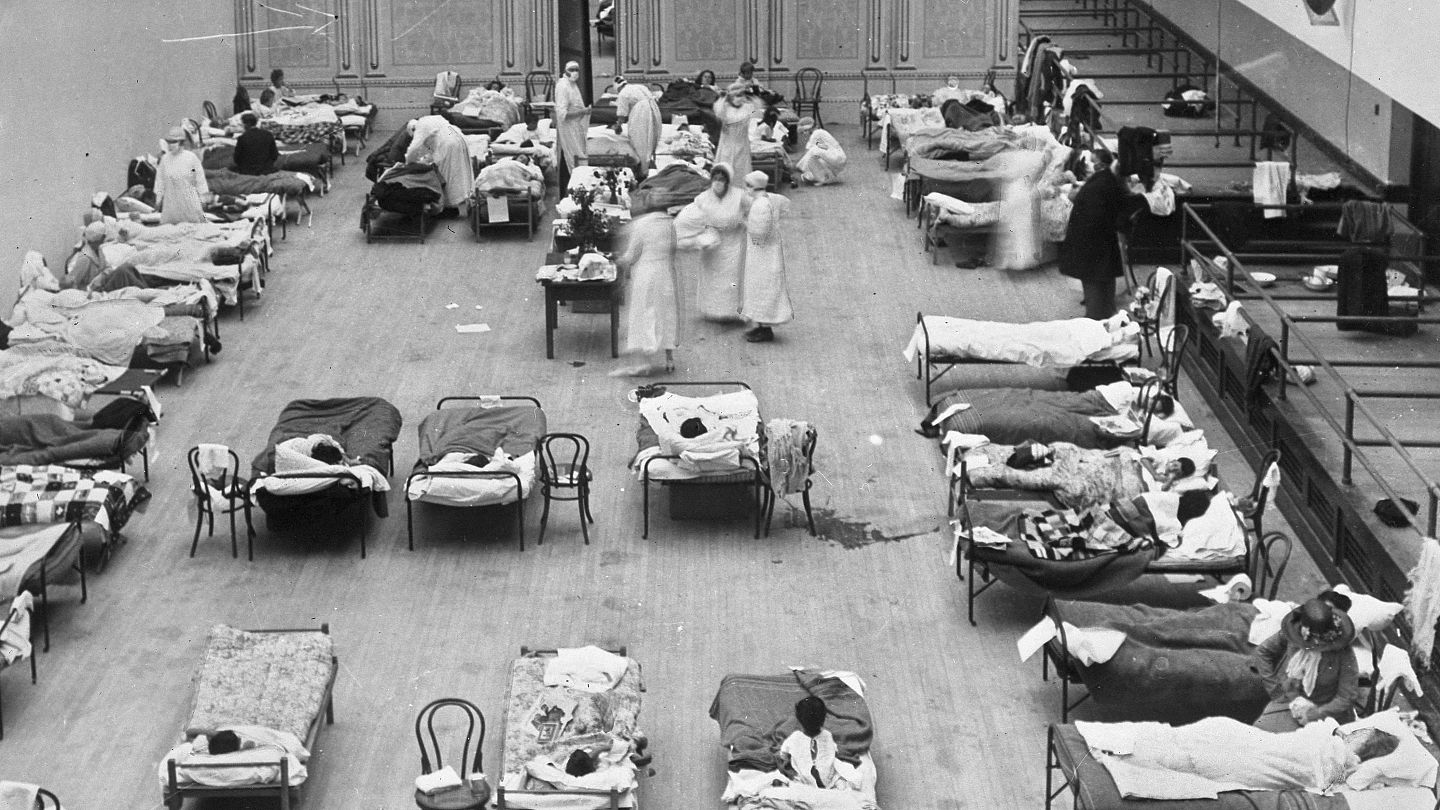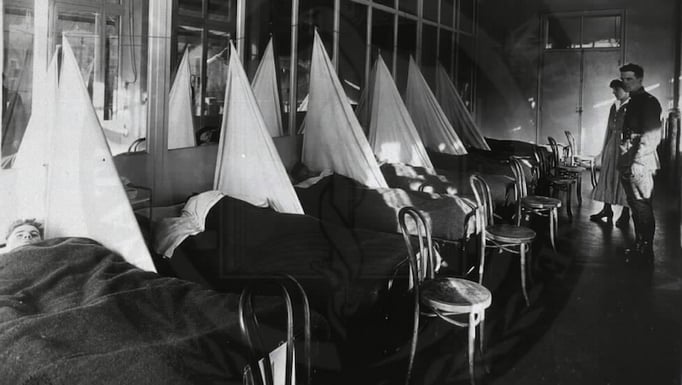Where Did Influenza Start
A virus that is a hybrid of human bird and swine flu viruses is detected in pigs. The first influenza pandemic occurred around 1580 and the second in 1743 the latter spreading from Rome to England and introducing the word flu to the English.
 Who Maps Of The Spread Of Influenza A H1n1
Who Maps Of The Spread Of Influenza A H1n1
Influenza virus surveillance in swine conducted by the US Department of Agriculture begins in the United States.

Where did influenza start. The 1580 pandemic began in Asia during the summer and then spread to Africa and Europe. H3N2 first emerged in Hong Kong in 1968. A collection of letters of a soldier stationed in Camp Funston Soldier.
This virus becomes the dominant flu virus in US. Within six months influenza had spread from southern Europe all. Before and after 1918 most influenza pandemics developed in Asia and spread from there to the rest of the world.
The first influenza pandemic of the 21st century was initially reported in April 2009 in Mexico and swept through the Northern Hemisphere in two waves. Many of these new viruses likely originated in insects many million years ago and at some point in evolution developed the ability to infect other speciesprobably as insects interacted with or. Although it remains uncertain where the virus first emerged it quickly spread through western Europe and by July it had spread to Poland.
The swine-origin influenza A H1N1 virus that appeared in 2009 and was first found in human beings in Mexico is a reassortant with at least three parents. Influenza could infect so their conclusion was well interference seem to play a big role in this viral interference. One hypothesis states that this gives the viral population an evolutionary head start thus new epidemics will.
70 rows The term influenza is first used to describe a disease prevailing in 1357. It gives biomedical researchers a head start on characterizing possible pandemic viruses to understand their potential impact. The first wave of influenza was comparatively mild.
The 1918 influenza pandemic was commonly referred to as the Spanish flu but it did not originate in Spain. For example influenza A subtype H2N2 or 1957 flu pandemic apparently began in East Asia early in 1957 and by midyear it had circled the globe. Influenza-like illness epidemic develops in Europe preferentially killing elderly and debilitating persons.
It is thought to have originated in China in a rare genetic shift of the influenza virus. Most medical professionals consider flu season to align with the colder months of fall into winter sometimes stretching into the beginning of spring. 12 October 2018 - At the start of the flu season in the Northern hemisphere WHO launched today an in-depth multimedia package on influenza including the lessons we can learn from previous flu pandemics how prepared we are for another one and how work on seasonal flu can help countries to prepare for future pandemics.
Six of the genes are closest in sequence to those of H1N2 triple-reassortant influenza viruses isolated from pigs in North America around 1999-2000. However during the summer a more lethal type of disease was recognized and this form fully emerged in August 1918. A letter to a fellow physician describing conditions during the influenza epidemic at Camp Devens.
The 1918 influenza pandemic was the most severe pandemic in recent history. As expected the virus traveled south for the Southern Hemispheres winter where it spread across tropical regions of Asia Central and South America and South Africa largely replacing the. And public health.
The origins of this influenza variant is not precisely known. The outbreak lasted on a pandemic level until about the middle of 1958 and caused an estimated one million to two million deaths worldwide. When the Great Influenza struck in 1918.
The rhino virus that initially infected the cells triggered an interference response that primed up the innate immune system in these cells fired up these genes. It was given the name by journalists when the Spanish king Alfonso XIII fell seriously ill with a form of influenza in May that year. News from neutral Spain was not censored in the way that news from countries at war was.
The origin of the name Influenza earned its name from an Italian folk word that attributed colds cough and fever to the influence of the stars. In the United States it was first identified in military personnel in spring 1918. It was caused by an H1N1 virus with genes of avian origin.
Although there is not universal consensus regarding where the virus originated it spread worldwide during 1918-1919. It would be applied again to the epidemic in 13861387.
 Social And Economic Impacts Of The 1918 Influenza Epidemic Nber
Social And Economic Impacts Of The 1918 Influenza Epidemic Nber
 Mapping The Spanish Flu Pandemic Earth Org Past Present Future
Mapping The Spanish Flu Pandemic Earth Org Past Present Future
 History Of 1918 Flu Pandemic Pandemic Influenza Flu Cdc
History Of 1918 Flu Pandemic Pandemic Influenza Flu Cdc
 Lessons From The 1918 1919 Spanish Flu Pandemic In Africa Africa Center For Strategic Studies
Lessons From The 1918 1919 Spanish Flu Pandemic In Africa Africa Center For Strategic Studies
 How Did The Spanish Flu Pandemic End And What Lessons Can We Learn From A Century Ago Euronews
How Did The Spanish Flu Pandemic End And What Lessons Can We Learn From A Century Ago Euronews
 How Did Spanish Flu Get Its Name Why Is It Called Spanish Flu When It Did Not Start In Spain Historyextra
How Did Spanish Flu Get Its Name Why Is It Called Spanish Flu When It Did Not Start In Spain Historyextra
 Influenza Pandemic Of 1918 19 Cause Origin Spread Britannica
Influenza Pandemic Of 1918 19 Cause Origin Spread Britannica
 Where Does The Flu Come From Every Year Uchicago Medicine
Where Does The Flu Come From Every Year Uchicago Medicine
 Influenza Causes Treatments Pandemics History
Influenza Causes Treatments Pandemics History
The Spanish Influenza Pandemic And Its Relation To World War I World War I Centenary
 1918 Flu Pandemic That Killed 50 Million Originated In China Historians Say
1918 Flu Pandemic That Killed 50 Million Originated In China Historians Say
 Global Spread Of H5n1 Wikipedia
Global Spread Of H5n1 Wikipedia

Comments
Post a Comment